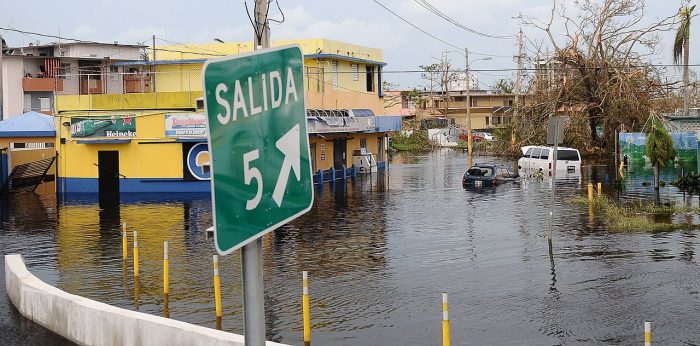For better or for worse, everything in Puerto Rico is now contextualized as “before” or “after” Hurricane María. Almost two months after this hurricane, the hours seem to be quantified with an hourglass. You have to arm yourself with ingenuity because there is no other way, or rather, there is no other reality. Especially at night, heat intensifies the waiting that despairs —the wait for the restoration of water and electricity service to the whole Island, the arrival of an uninterrupted Internet signal, the feeling of greater tranquility— in short, a desire for “NORMALIDAD,” the new fantasy of both young and old.
But there is debris in the streets and there are still sectors prone to brutal floods. At the same time, public education teachers are fighting the battle with limited resources and school periods that have had to be adjusted due to the lack of power. After this atmospheric event, the government hums a Transformation Plan for the Puerto Rico Electric Power Authority (PREPA) with ideas of solar energy, natural gas and propane gas, while the Federal Board of Fiscal Control talks about privatization and that’s all. Antagonisms that cannot be absent in an emergency situation. Meanwhile, the agency that tracks commerce on the island already warned that over 5,000 businesses have closed due to no electricity.
This scenario highlights yet another dilemma for Puerto Ricans: to leave or not to leave the country. Indecision surely occupies the minds of many. I do not blame them at all, since the “tantrum” to take or not take a plane hit me as well.
There are days when we wake up like warriors and days when we wake up with fear. That is the reality. It’s just natural.
“We are human beings, not perfect human beings,” a therapist friend tells me.
I do not judge those who have left, but I would not have wanted them to leave so abruptly. I go to Facebook and a lump forms in my throat when I read the posts of people who are leaving to Orlando. Friends call me to know if I’m okay, and then they say, “I’m leaving to the US too.” Some leave for a month or two to transmute so much pain, but others will leave for a long time and won’t come back. In my case, I continue in San Juan drawing strength from everything and everyone.
With all the people who have left the island —especially the exodus of students from public schools— the unemployed remain in Puerto Rico and tourism is devastated, causes massive challenges to the economy. In addition, problems are already anticipated with President Trump’s new tax reform that proposes a tax on products imported from Puerto Rico to the mainland United States.
Yet they say the best opportunities arise from crises, and economist Gustavo Vélez projects a growth of 2.6% for the local economy in 2018, compared to the 1.7% that happened in 2017. Also, he predicts that approximately 50,000 jobs will be created. What worries me, however, is that at this juncture, the residents of Puerto Rico cannot sustain a healthy relationship between income and expenses, because the current circumstances are so difficult.
Rebuilding Puerto Rico will require bolder thinking and actions by the Government, private companies and residents. There must be new economic maps to explore.
Our vulnerability can catapult us or it can bury us. I choose the first option. Puerto Rico can rise up more supportive than ever. Puerto Ricans can rise stronger than ever. It’s a matter of attitude and yes, of resilience too.
***
A graduate of the University of Puerto Rico, Joyce A. González Pérez is a journalist and business consultant who for three years worked as a Media Monitoring Officer at the Central Communications Office of La Fortaleza, under the administration of governor Alejandro García Padilla. González Pérez has also worked as a freelance journalist with outlets such as El Nuevo Día, Diálogo Digital and Buena Mesa Magazine.



